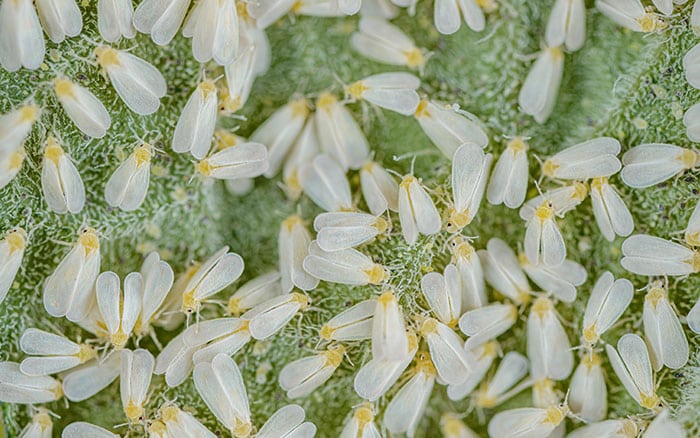How to control garden pests UK
It’s no secret that our gardens are full of creepy crawlies, and that’s okay. Some of them play an important role in maintaining a healthy garden. Others…not so much.
It’s impossible not to run a garden without encountering some pesky pests from time to time. And can you blame them? Your school or community garden is bursting with delicious fruit, veg, plants, and flowers. But don’t fret. We’ve put together a list of friendly ways to move your pests along. Protect your plants from pests, and your pests from lasting harm, with these tips for getting rid of 3 top garden and greenhouse pests.
1. How to stop wasps.
Wasps have a terrible reputation in the UK. Their sharp sting induces panic in every innocent picnic-goer, Pimms drinker, and gardener. There are actually around 7,000 species of wasps. And it’s only a few of these that start to bother us in summer. Social wasp’s nests are annual and begin to die down around summertime. This leaves the remaining wasps with nothing to do. And because their sugar supply has been shut down, they come in search of ours. So, how can we stop them?

Make a wasp trap.
Wasp traps are super easy to make, and great because they involve recycling your empty plastic bottles. So, this can make a great classroom activity. Simply cut the top off your water bottle, turn the top part upside down, placing it back into the body of the bottle. This will create a funnel. Lure the wasps in with a sweet substance. Water and sugar should do the trick. Once the wasps enter through the funnel, it should be tricky for them to find their way back out. You can then release them when you’re done for the day.
Grow wasp-repellent herbs.
This is a great solution because you’ll benefit in two ways. You’ll grow some delicious, fragrant herbs to use in your home, community, or school kitchen, and you’ll deter wasps! Wasps are particularly averse to Artemisia absinthium ‘Wormwood’, Mentha spicata ‘Spearmint’, and Thymus vulgaris ‘Thyme’.
Make a fake wasp's nest.
We know it sounds crazy…but it works! Wasps are super territorial. If they think there are other bees in town, they’ll swiftly pack their bags and buzz off.
2. How to stops slugs.
We all know the dread of turning up to our gardens and finding those silvery slime trails graffitied on our paving and plants. Slugs are, to put it bluntly, a nuisance! They eat our growing plants for dinner and leave holes in our best-looking perennials. Active all year round, they really get excited in Spring, because of all our new growth. So, how do we stop them?

Create a healthy ecosystem.
The best thing you can do is create a healthy ecosystem, full of slug predators. Add a bird bath and seed to attract feathered friends. Plus, a pond for frogs, newts, and toads. But you’ll want to add a hedgehog ramp because adding a log or leaf pile hedgehogs can make a home. All of this will gobble up your slugs. It might not seem the most ethical option, but it’s nature.
Create slug zone.
At the other end of the spectrum, you might opt to effectively ‘care’ for your slugs. And no, we don’t mean building them their own penthouse suite. Instead, consider creating an area full of plants you’re happy for them to feed on. This can include lettuce and cabbage, for example. Slugs also enjoy dry cat food, bread rolls, and oats. Sounds a bit like my shopping list!
Water in the morning.
Gardening in the morning is an absolute delight. The sun comes up, people are full of energy, and, well…the slugs are asleep! When possible, water your garden in the morning. Slugs are drawn to cold, damp, and dark places. So, the dryer the soil when night falls, the less likely you are to be bothered by slugs.
3. How to stop greenhouse whitefly.
If your school or community garden is lucky enough to be complete with a greenhouse, it’s likely you’ll come across greenhouse whiteflies at some point. These are small white flies that tend to collect on the underside of leaves. Although they have a minute lifespan of three weeks, they breed fast. They become a real nuisance because they excrete a sticky excess, known as honeydew. And this encourages black sooty mould to grow, weakening the plant. So, what can we do to stop them?

Add strong-smelling plants to your greenhouse.
Strongly scented plants, like thyme and lavender, are said to deter greenhouse whitefly. Plus, they’ll also get your greenhouse looking and smelling great!
Warm water.
Although this isn’t a permanent solution, you should be able to remove remnants of honeydew, or sooty mould, from your plants with some warm water. Simply grab a clean cloth and give them a wipe.
Brush the leaves.
Even easier than warm water, brushing your plant leaves daily will make sure Greenhouse Whitefly don’t stick around long enough to taint your greenhouse with their sticky residue. For school or community gardens, why not make a handy schedule? That way you can make sure these pests don’t become permanent.
And there you have it! Some of the kinder ways to minimise pests in your garden or greenhouse. And if you have any other pests you’re struggling with, don’t hesitate to drop us a comment, or get in touch via any of our social media platforms. We’re sure to have a solution for you!

